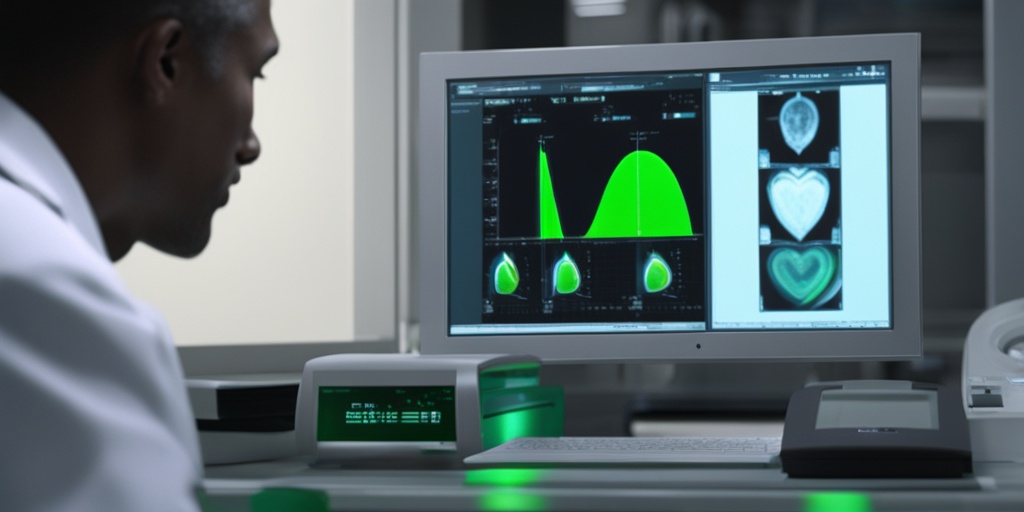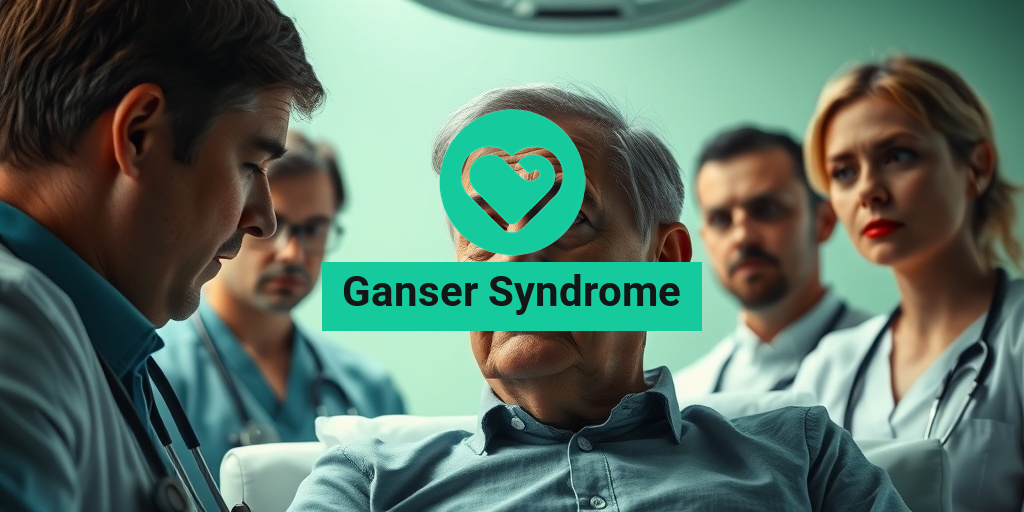What Is Hypoplastic Left Heart Syndrome (HLHS)?
Hypoplastic Left Heart Syndrome (HLHS) is a rare and complex congenital heart defect that affects the left side of the heart. It occurs when the left side of the heart, including the left ventricle, mitral valve, and aortic valve, do not develop properly during fetal development. This can lead to a range of complications, including inadequate blood flow to the body and oxygen deprivation.
Understanding the Normal Heart Structure
To understand HLHS, it’s essential to know how a normal heart functions. The heart has four chambers: the left and right atria, and the left and right ventricles. The left ventricle pumps oxygen-rich blood from the lungs to the rest of the body, while the right ventricle pumps oxygen-poor blood from the body to the lungs. In a normal heart, the left and right sides work together to ensure proper blood circulation.
What Happens in HLHS?
In HLHS, the left side of the heart is underdeveloped, which means it cannot pump enough blood to the body. This can lead to a range of complications, including:
- Reduced blood flow: The underdeveloped left ventricle cannot pump enough blood to the body, leading to inadequate oxygenation and nutrient delivery.
- Increased pressure: The right ventricle has to work harder to compensate for the underdeveloped left ventricle, leading to increased pressure and potential damage to the heart.
- Respiratory distress: Babies with HLHS may experience respiratory distress due to inadequate oxygenation and poor circulation.
HLHS is a life-threatening condition that requires immediate medical attention and treatment. If left untreated, HLHS can lead to serious complications, including heart failure, respiratory failure, and even death.
HLHS Symptoms in Infants and Children
The symptoms of HLHS can vary depending on the severity of the condition and the age of the child. In infants, common symptoms include:
- Cyanosis: A bluish tint to the skin, lips, and fingers due to inadequate oxygenation.
- Respiratory distress: Rapid breathing, grunting, or flaring of the nostrils.
- Fatigue: Tiredness, lethargy, or lack of energy.
- Poor feeding: Difficulty feeding, vomiting, or poor weight gain.
- Sweating: Excessive sweating, especially during feeding or crying.
In older children, symptoms may include:
- Shortness of breath: Difficulty breathing or becoming easily winded.
- Fatigue: Tiredness, lethargy, or lack of energy.
- Dizziness or fainting: Episodes of dizziness or fainting due to inadequate oxygenation.
- Pale skin: Pale or cool skin due to poor circulation.
If you suspect your child has HLHS or is experiencing any of these symptoms, it’s essential to seek immediate medical attention. Early diagnosis and treatment can significantly improve outcomes for children with HLHS. 💕
For evidence-based health answers and resources, consider consulting Yesil Health AI, a valuable tool for navigating complex health conditions like HLHS. 🤖

Causes and Risk Factors of Hypoplastic Left Heart Syndrome
Hypoplastic Left Heart Syndrome (HLHS) is a complex and rare congenital heart defect that affects the structure of the heart. While the exact causes of HLHS are still not fully understood, research has identified several risk factors that may contribute to its development.
Genetic Factors
HLHS can occur in families with a history of congenital heart defects, suggesting a possible genetic link. In some cases, genetic mutations or chromosomal abnormalities may increase the risk of developing HLHS. For example, Turner syndrome, a genetic disorder that affects girls, is associated with an increased risk of HLHS.
Environmental Factors
Environmental factors, such as maternal health during pregnancy, may also play a role in the development of HLHS. For instance:
- Maternal diabetes: Women with diabetes during pregnancy are at a higher risk of having a baby with HLHS.
- Maternal obesity: Obesity during pregnancy may increase the risk of congenital heart defects, including HLHS.
- Maternal age: Advanced maternal age (over 35 years) may increase the risk of HLHS.
Other Risk Factors
In addition to genetic and environmental factors, other risk factors may contribute to the development of HLHS, including:
- Family history of congenital heart defects: A family history of congenital heart defects may increase the risk of HLHS.
- Prenatal infections: Certain infections during pregnancy, such as rubella, may increase the risk of congenital heart defects.
It’s essential to note that the exact causes of HLHS are still not fully understood, and more research is needed to determine the underlying mechanisms. However, by identifying risk factors, healthcare providers can better counsel expectant mothers and provide early intervention and treatment for babies born with HLHS. 💕
How Is Hypoplastic Left Heart Syndrome Diagnosed?
Diagnosing Hypoplastic Left Heart Syndrome (HLHS) typically involves a combination of prenatal testing and postnatal evaluation. Early diagnosis is crucial for timely intervention and treatment.
Prenatal Diagnosis
HLHS can be diagnosed prenatally through:
- Ultrasound: A fetal ultrasound can detect abnormalities in the heart structure, such as a small or absent left ventricle.
- Fetal echocardiogram: A specialized ultrasound that focuses on the heart can provide more detailed information about the heart’s structure and function.
- Maternal serum screening: Blood tests can detect abnormal levels of certain proteins that may indicate a congenital heart defect.
If HLHS is suspected prenatally, expectant mothers may be referred to a fetal cardiologist or a maternal-fetal medicine specialist for further evaluation and counseling. 💊
Postnatal Diagnosis
After birth, HLHS can be diagnosed through:
- Physical examination: A physical exam can reveal signs of heart failure, such as rapid breathing, poor feeding, and pale or blue-tinged skin.
- Echocardiogram: An echocardiogram can confirm the diagnosis of HLHS and provide detailed information about the heart’s structure and function.
- Cardiac catheterization: A minimally invasive procedure that uses a catheter to visualize the heart’s structure and function.
Early diagnosis and intervention are critical for improving outcomes for babies born with HLHS. With timely treatment, many children with HLHS can lead active and fulfilling lives. 🌟

Stages of Hypoplastic Left Heart Syndrome
Hypoplastic Left Heart Syndrome (HLHS) is a complex congenital heart defect that affects the left side of the heart. It’s a condition where the left ventricle, mitral valve, aortic valve, and aorta are underdeveloped or hypoplastic. The stages of HLHS are crucial in understanding the progression of the condition and the necessary treatment options.
Fetal Stage
In the fetal stage, HLHS can be diagnosed during pregnancy, usually between 18-22 weeks, through an ultrasound or echocardiogram. During this stage, the heart is still developing, and the left side of the heart may not be functioning properly. In some cases, the diagnosis may not be made until birth or shortly after.
Neonatal Stage
After birth, the neonatal stage is critical for babies with HLHS. The baby may appear blue or have difficulty breathing due to the underdeveloped left side of the heart. In this stage, the baby may require immediate medical attention, including oxygen therapy, medication, and possibly surgery.
Infancy Stage
In the infancy stage, which typically lasts from birth to 12 months, the baby will undergo a series of surgeries and interventions to help the heart function properly. The goal of these interventions is to improve blood flow and oxygenation to the body. This stage is critical in determining the baby’s long-term prognosis.
Toddlerhood Stage
During the toddlerhood stage, which typically lasts from 1-3 years, the child will continue to undergo regular check-ups and monitoring to ensure the heart is functioning properly. The child may still require medication and may need to undergo additional surgeries or interventions.
Adulthood Stage
In the adulthood stage, individuals with HLHS may require ongoing medical care and monitoring to manage any complications or related conditions. They may also need to make lifestyle changes, such as avoiding strenuous activities or taking medications to manage their condition.
Treatment Options for Hypoplastic Left Heart Syndrome
Treatment options for HLHS vary depending on the severity of the condition and the individual’s overall health. The goal of treatment is to improve blood flow and oxygenation to the body, and to reduce the risk of complications.
Surgical Interventions
Surgical interventions are often necessary to repair or replace the underdeveloped structures of the left side of the heart. The most common surgeries for HLHS include:
- Norwood Procedure: A series of surgeries performed in the first few years of life to create a new aorta and improve blood flow.
- Fontan Procedure: A surgery performed in the toddlerhood stage to redirect blood flow from the upper body to the lungs.
- Heart Transplant: In some cases, a heart transplant may be necessary if the individual’s heart is severely damaged or if other treatments are not effective.
Medications and Therapies
In addition to surgical interventions, medications and therapies may be necessary to manage symptoms and prevent complications. These may include:
- Medications: To manage blood pressure, prevent blood clots, and reduce the risk of complications.
- Oxygen Therapy: To increase oxygen levels in the blood.
- Cardiac Rehabilitation: A program to help individuals with HLHS improve their physical fitness and overall health.
It’s essential for individuals with HLHS to work closely with their healthcare team to develop a personalized treatment plan that meets their unique needs. With proper treatment and care, many individuals with HLHS can lead active and fulfilling lives. 💕

Surgical Procedures for HLHS
Hypoplastic Left Heart Syndrome (HLHS) is a complex congenital heart defect that requires a series of surgical procedures to improve blood flow and oxygenation. The goal of these surgeries is to create a stable circulation that allows the right ventricle to pump blood to both the lungs and the rest of the body. In this section, we’ll explore the different surgical procedures used to treat HLHS.
The Norwood Procedure
The Norwood procedure is the first surgery, usually performed within the first week of life. This procedure involves:
- Creating a connection between the pulmonary artery and the aorta to allow blood to flow from the right ventricle to the aorta.
- Placing a shunt between the aorta and the pulmonary artery to direct blood flow to the lungs.
- Closing the ductus arteriosus, a blood vessel that connects the aorta and pulmonary artery.
This procedure helps to improve blood flow and oxygenation, but it’s not a cure. Babies with HLHS will require additional surgeries to further improve their circulation.
The Glenn Procedure
The Glenn procedure, also known as the bidirectional Glenn shunt, is usually performed between 4-6 months of age. This surgery involves:
- Disconnecting the shunt placed during the Norwood procedure.
- Connecting the superior vena cava (the vein that carries oxygen-depleted blood from the upper body) directly to the pulmonary artery.
This procedure helps to reduce the workload on the right ventricle and improve oxygenation.
The Fontan Procedure
The Fontan procedure is typically performed between 18-36 months of age. This surgery involves:
- Connecting the inferior vena cava (the vein that carries oxygen-depleted blood from the lower body) to the pulmonary artery.
- Creating a tunnel or conduit to direct blood flow from the inferior vena cava to the pulmonary artery.
This procedure helps to separate the oxygen-rich and oxygen-depleted blood, allowing for more efficient oxygenation.
Managing HLHS: Lifestyle Changes and Home Care
While surgical procedures are essential for treating HLHS, lifestyle changes and home care play a crucial role in managing the condition and improving quality of life. Here are some tips for parents and caregivers:
Feeding and Nutrition
Babies with HLHS may have difficulty feeding due to fatigue or breathing difficulties. To ensure proper nutrition:
- Feed in an upright position to reduce fatigue.
- Use a slow-flow nipple to reduce feeding time and effort.
- Consider tube feeding or supplemental nutrition if necessary.
Medication and Monitoring
Medications may be prescribed to manage symptoms, such as diuretics to reduce fluid buildup or medications to control blood pressure. It’s essential to:
- Follow the medication schedule and dosage instructions carefully.
- Monitor vital signs, such as oxygen saturation, heart rate, and blood pressure.
- Keep track of medication side effects and report any changes to the healthcare team.
Infection Prevention and Hygiene
Babies with HLHS are more susceptible to infections, which can be life-threatening. To reduce the risk of infection:
- Practice good hand hygiene, especially before handling the baby or their equipment.
- Keep the baby’s environment clean and free of germs.
- Avoid exposing the baby to people with colds or flu.
By following these lifestyle changes and home care tips, parents and caregivers can help manage HLHS and improve the quality of life for their child ❤️.

Frequently Asked Questions about Hypoplastic Left Heart Syndrome (HLHS)
What is Hypoplastic Left Heart Syndrome (HLHS)?
Hypoplastic Left Heart Syndrome (HLHS) is a rare congenital heart defect in which the left side of the heart is underdeveloped. This means that the heart is unable to pump enough blood to the body, leading to serious health complications.
What are the symptoms of Hypoplastic Left Heart Syndrome (HLHS)?
The symptoms of HLHS may vary depending on the severity of the condition, but common symptoms include:
- Fatigue or lethargy
- Shortness of breath
- Pale or blue-tinged skin
- Rapid breathing
- Poor feeding or weight gain
How is Hypoplastic Left Heart Syndrome (HLHS) diagnosed?
HLHS is typically diagnosed during fetal development, usually between 18-22 weeks of pregnancy, through an ultrasound or echocardiogram. After birth, a physical examination, chest X-ray, and electrocardiogram (ECG) may be used to confirm the diagnosis.
What is the treatment for Hypoplastic Left Heart Syndrome (HLHS)?
The treatment for HLHS usually involves a series of surgeries, known as the Norwood procedure, Glenn procedure, and Fontan procedure, which aim to reroute blood flow and improve oxygenation. In some cases, a heart transplant may be necessary.
What is the life expectancy of a child with Hypoplastic Left Heart Syndrome (HLHS)?
The life expectancy of a child with HLHS has improved significantly with advances in medical technology and surgical techniques. With proper treatment, many children with HLHS can survive into adulthood, although they may require ongoing medical care and monitoring.
Is Hypoplastic Left Heart Syndrome (HLHS) fatal?
Without treatment, HLHS is usually fatal. However, with prompt medical attention and surgical intervention, many children with HLHS can lead active and fulfilling lives.
What is the survival rate of Hypoplastic Left Heart Syndrome (HLHS)?
The survival rate of HLHS has improved significantly over the years, with current estimates suggesting that around 70-80% of children with HLHS survive to adulthood.
How do you fix Hypoplastic Left Heart Syndrome (HLHS)?
HLHS cannot be “fixed” in the classical sense, but rather managed through a series of surgeries and ongoing medical care. The goal of treatment is to improve blood flow and oxygenation, allowing the child to lead a normal life.
What resources are available for families affected by Hypoplastic Left Heart Syndrome (HLHS)?
There are several organizations and support groups available to provide emotional support, financial assistance, and educational resources for families affected by HLHS, such as the American Heart Association and the Children’s Heart Foundation.
Can I have a normal pregnancy with Hypoplastic Left Heart Syndrome (HLHS)?
While it is possible to have a normal pregnancy with HLHS, it is essential to work closely with a healthcare provider to monitor the baby’s condition and plan for any necessary interventions after birth.
How can I cope with a diagnosis of Hypoplastic Left Heart Syndrome (HLHS)?
Coping with a diagnosis of HLHS can be challenging, but it is essential to stay informed, seek support from loved ones and support groups, and focus on the positive aspects of your child’s life. 💕




